Why We Stopped Brainstorming
Because these two words kill creativity.
“Let’s brainstorm.”
Worst case. People get pulled away unexpectedly from their press releases into a room with a flipchart, unsure why they’re there. The session lurches - from moments of eager ideas pouring from the mouths of some, while lots of others look panic-stricken or bored - to a deadzone of everyone staring at the scattered idea-corpses of decaying post-its. Somebody says, when the silence gets agonising, that they’ll take all this away and ‘work it up’. They pick through the stickies-carnage on their own, despairing because they thought there was something ‘good’ in there, but when they find it, it’s now just a dayglo note with a picture of a stickman lifting his hat and saying ‘good morning’ to no-one in particular and the word ‘stunt’ scribbled above it.
The whole thing took three hours. Nine people, for three hours. That’s the same as three days of someone’s time, for the good-morning-hat-man-stunt non-idea.
So, instead we have a creative process.
“But creativity isn’t a process”, someone sobs, as they forlornly pull the wings off an ideas-fairy flitting through ideas-land.
Yeah, I know, processes are instantly uncool. It’s like we’ve ISO9002’d ideas.
Surely you’ve just got to entwine facial hair in some Vulcan beard-meld while you chime Nepalese finger bells and sort through the pasta-shapes of inspo. No?
No. Coming up with ideas is something we do, repeatedly. We’re (rightly) expected to be good at it. Every time.
Experience - and a few wise people - have shown us that certain things, different things, need to happen, at different stages.
Because this stuff has been studied for decades. Why ignore their analyses for the unwisdom of the unstructured brainstorm?
In the fifties a fascinating series of studies were led by the Institute of Personality Assessment and Research (IPAR) at the University of California, Berkeley exploring - and trying to understand - the minds and thought processes of creative people (have a listen on the 99% Invisible podcast for some recordings of the discussions). This includes audio recordings of their most famous tests of over 40 architects. This personality-work found amongst other things, that “creative people tend to be nonconforming, interesting, interested, independent, courageous and self-centered.”
Whether you accept this, or not, there are lots of reasons why we - as an agency - want and need to include a diversity of people. So we need a process that embraces this diversity.
Synectics - also dating from the 1950s - and introduced to Bottle by Nigel Clarke of the Insights Shed, was borne from another study of the creative process. It recognises stuff we hold true: that creativity means embracing the seemingly irrelevant; that emotion trumps the rational; that analogies and metaphors help make “the familiar strange and the strange familiar".
Repeatability. Steps. Even the dreaded ‘efficiency’ word. That sounds like a process.
Google’s innovation teams have no such fear. IDEO have a process.
At Bottle, it’s a process that doesn’t start unless there’s a ‘problem owner’, a creative brief, and some planning.
A process where people are picked to be involved, and have different jobs to do. So there isn’t a few people dominating the airtime, and a few others unsure why they’re there in the first place.
A process where people are paired, for some steps, because you get ownership and commitment and a special sort of creative-friction when two people are staring down the barrel.
A process with not just an owner, but also a facilitator, and some hand-picked resourceful people who are excited and curious to be involved.
A process that recognises that some people are extrovert, some are introvert and others are ambivert, and so it gives places and spaces where their preferences can flourish.
A process that kicks off with divergent, open stages - full of stimulus and mental excursions. Where we have rules about judging (don’t), and building (do) - we keep it purely wishful.
A process that has convergent and (sometimes brutal) judge-y stages, where ideas get evaluated, and maybe sent back to get better, or killed off.
A process that separates those stages, because they require us to be in a different mode. (All babies are ugly - so we don’t judge ideas when they’re still newborn and blinking in the light.)
Is it perfect? No. But that’s the other good thing about a process. You can take a look at it, and think about ways to improve it.
We think it’s a good idea.
<click here to download a guide to our Bottle creative process>





